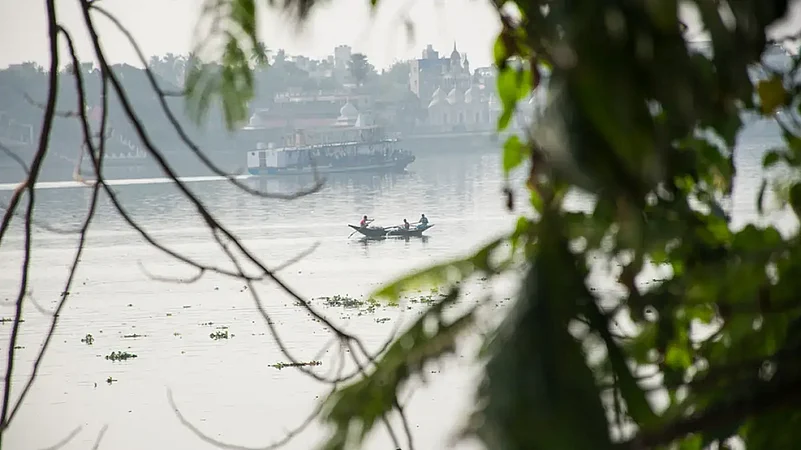As I stood on the bank of the Ganges looking at Belur Math on the other side, it hit me that we humans know so little about our past, especially the cities we live in. I have been a resident of the 'City of Joy' since I was born. And I thought I knew my way around it quite well. I had been to the area named Baranagar several times to visit acquaintances. But I had no idea that it used to be a Dutch colony, or that it has links with Subhas Chandra Bose.
I learned all that when I signed up for a heritage walk.
Advertisement
It was in the relatively pleasant month (as in, it wasn't sweltering hot) of February when I joined a motley group of people near Sinthi More off BT Road. Our first stop was the residence of the Dutch governor, a crumbling edifice which doesn't at all look like it had once been the seat of power in a long-gone era. Dutch merchants had set up their base in this area in the 17th century. The existence of Dutch kuthis gives the place its name, Kutighat. The Ganges flows beside this place, with a nice view of the Belur Math on the opposite side.
Advertisement
After hanging out by the riverside, enjoying the breeze, we moved on to our next stop, Joy Mitra Kali Bari or Kripamayee Kali Temple. A priest here informed us that the structure inside the temple is similar to the famous Kali temple at Dakshineshwar. We couldn't verify this as the temple was closed for the afternoon.
Zamindar Joynarayan Mitra from Kolkata's Shovabazar Rajbari family had built this temple. On October 5, 1864, a Dutch merchant ship had crashed into the 'nahabatkhana' here, and the ruins from this incident are still around. The next stop in our journey was Kathadari Math which once preserved the ''blanket'' or 'katha'' of Shri Chaitanya Mahaprabhu. Raja Ram Mohan Ray had stopped a satidaha practice at one of the ghats here. It is now known as the Satidaha Ghat.

We moved on to the Narail Zamindar Bari located on Ratan Babu Road. It was built by zamindar Pulin Bihari Ray who hailed from Narail in Bangladesh. It was interesting to know that the Azad Hind Fauj led by Subhas Chandra Bose had once occupied a part of this zamindar bari. Now a heritage monument, the royal palace complex consists of residential houses as well as several temples dediacted to Shiva, Radha Krishna, and Kali.
Our last stop for the day was the Bamandas Kali Temple built in 1904. A stone plaque mentions that a celebratory event had been held here for Bose after he was elected as Congress president.
Advertisement
You can also visit the Baranagar Math and Alamnagar Math, associated with Swami Vivekananda. The Kancher Mandir or Glass Temple is an intricate building made of glass that gives information about Ramakrishna Paramahansa and his ideologies.
If you need a snack break, we can recommend any of the sweet shops here. For a hearty meal, head to the Dhaka Biryani House situated near Baranagar Road railway station. The town also has Cafe Coffee Day and Domino’s Pizza outlets.
Getting there: The area is well connected by road to other parts of Kolkata. You can take a local train from Howrah to Baranagar Road railway station. Or a Metro ride to Noapara. Ferry services are generally available from Bagbazar, and from Howrah to Kutighat, but due to the pandemic, these are temporarily closed.




















